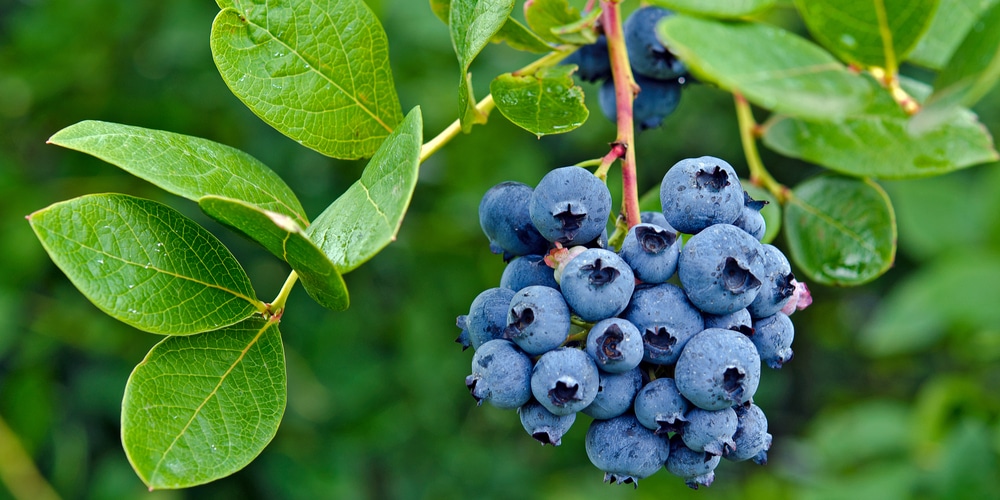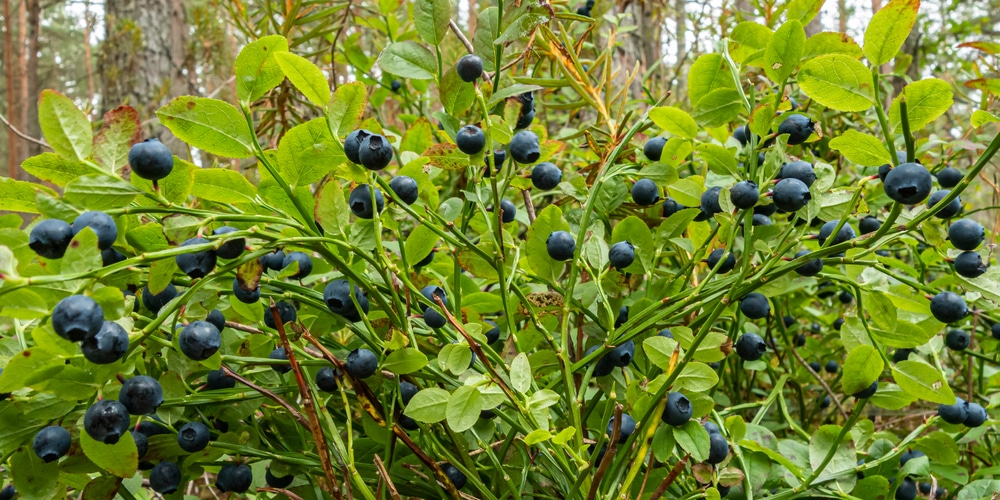You might be interested in growing highly nutritious blueberries right in your yard but only have a limited amount of space.Do blueberries need a lot of space to grow? How wide do blueberry bushes get?
Thankfully, there are enough blueberry cultivars, each with its own height and spread, to give growers with yards of all sizes the chance to grow their own blueberries. Some species can even grow in a pot or container and be brought indoors.
How Big Do Blueberry Bushes Get?
There are several answers to this question, mainly because there are several cultivars of blueberries you can grow.
Concisely speaking, there’s the Lowbush, the Northern Highbush, the Southern Highbush, the Rabbiteye, and the Half-High variety. Each has its characteristic size, height, and spread. The range of how big and wide blueberry bushes can get vary from 1 to 3 feet or 3 to 8 feet in height, and 2 to 10 feet in width.
Lowbush. Lowbush blueberries are the smallest varieties around, with an average height of just a few inches to a maximum of 12 inches (one foot). These plants usually have a half-width that ranges from 4 to 8 inches.
Northern Highbush. Northern varieties can reach up to 7 feet tall (about 84 inches) and around 2 to 5 feet in width (about 24 to 60 inches). Within this hardy variety are bluecrop sub-cultivars that can reach up to 6 feet in height and 4 feet in width.
Southern Highbush. Southern highbush blueberries have more or less the same dimensions as their northern counterparts, topping off at 6 feet in height (about 72 inches) and 3 to 5 feet (about 36 to 60 inches) in width.
Rabbiteye. The biggest-growing blueberry cultivar of the lot, rabbiteyes can reach up to 9 feet (or 108 inches) tall and about half that in width. They’re popular varieties as rabbiteyes have high resistance against pests and excellent fruit flavor.
Half-High. Half-high blueberry species are literally half the length and width of their highbush counterparts. They can grow up to 2 to 4 feet (or 12 to 48 inches) tall and 2 feet in width.
How Much Space Does a Blueberry Bush Need?
Lowbush blueberry plants generally do not require spacing if you’re planting them outside. If you’re planning to grow them in containers, it’s best to follow a one plant per pot rule.
Spacing requirements for planting blueberry bushes will depend on your landscape preference. If you want them to stand out individually then it’s best to observe a 6 feet spacing (around 72 inches), but for growers who aim for a hedge then a spacing of 2 to 2.5 feet apart (or 24 to 30 inches) is recommended. When planting in a row, allow between 8 to 10 feet, or 96 to 120 inches so you can move freely while pruning or picking ripe fruits.
Best Practices to Keep in Mind When Planting Blueberries
Provide Rich, Well-Drained, and Acidic Soil
All blueberry cultivars will want a soil medium that’s rich in organic matter, well-draining, and acidic. If you want your blueberry bush to thrive, provide a bountiful harvest and last a long time, then it’s in your best interest to give the plant what it needs.
Check the soil’s pH levels and amend it with peat moss to lower it down to the recommended acidity. Also, you’ll want to work in a generous amount of compost and organic matter so the plant will get plenty of nutrients. Furthermore, it should be well-drained so the roots won’t stay waterlogged.
You’ll Need at Least Two Cultivars to Get Blueberry Fruits
For abundant and optimal pollination of blueberries, you should plant at least two different kinds of blueberry cultivars.
Prune and Fertilize for Excellent Yields
Young blueberry bushes can be lightly pruned as they’re getting established. Whenever you see flower blooms, simply remove them and you’ll be rewarded with more in the future.
After three or so years you should follow a heavy yet careful pruning. Remove low growth, as well as dead wood and discolored or short branches. You can cut back to a third of the bush annually to promote heavier berry production.
Also, it’s recommended that you fertilize with acid-based products at least once per year, preferably in early spring.


